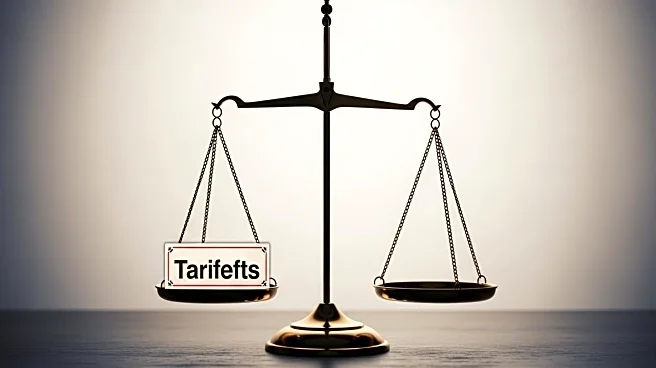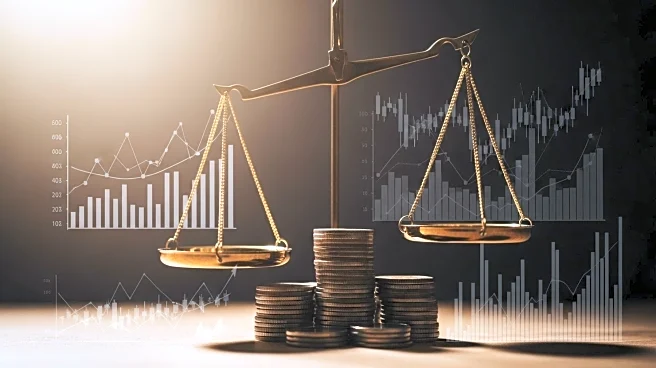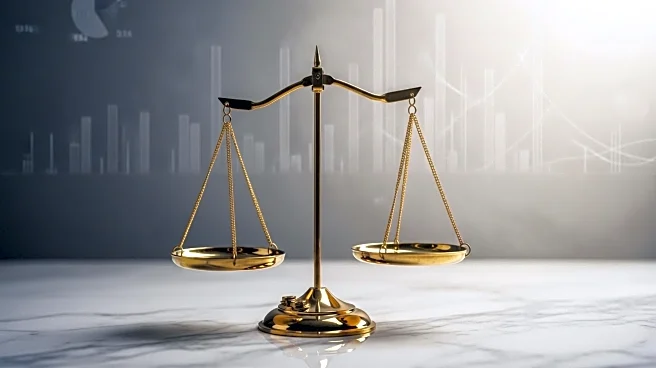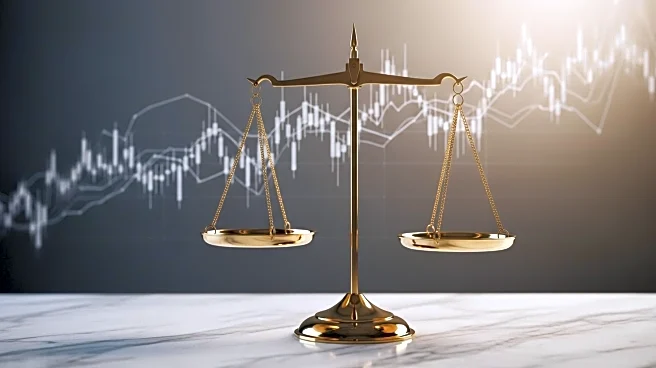What's Happening?
The Federal Reserve has reduced the benchmark interest rate by a quarter point, setting it between 4% and 4.25%. This decision comes in response to a weakening job market and forecasts of two additional quarter-point cuts within the year. Fed officials have revised their economic growth forecast for 2025, increasing it from 1.4% to 1.6%. Despite these adjustments, projections for unemployment and inflation remain unchanged. The unemployment rate has slightly increased to 4.3% in August, while inflation has accelerated, with the Consumer Price Index rising by 0.4% in August, marking a 2.9% annual increase. Fed Chair Jerome Powell highlighted the challenge of managing a cooling job market alongside rising inflation, noting the unusual situation of simultaneous risks to employment and inflation.
Why It's Important?
The Federal Reserve's decision to lower interest rates reflects a strategic shift in response to economic indicators, particularly the slowing job market and rising inflation. This move is significant for U.S. economic stakeholders, as it aims to balance the dual mandate of stable prices and maximum employment. Lower interest rates can stimulate borrowing and investment, potentially boosting economic activity. However, the persistent inflation poses a challenge, as it may erode purchasing power and affect consumer confidence. Businesses and investors will closely monitor these developments, as they could influence market dynamics and financial planning. The Fed's actions also underscore the complexity of navigating economic policy amid political pressures and global economic uncertainties.
What's Next?
The Federal Reserve is expected to implement two more quarter-point rate cuts this year, as indicated by their projections. Stakeholders, including businesses and policymakers, will be watching for further signals from the Fed regarding their approach to managing inflation and employment risks. The ongoing political dynamics, including President Trump's influence and recent appointments to the Fed, may also impact future decisions. Additionally, the Fed will continue to assess the effects of tariffs on inflation, as these could have longer-term implications for economic policy. The evolving economic landscape will require careful monitoring and adaptive strategies from both the Fed and economic stakeholders.
Beyond the Headlines
The Federal Reserve's actions highlight the broader implications of economic policy in a politically charged environment. The interplay between economic decisions and political pressures, such as those from President Trump, raises questions about the independence of monetary policy. The Fed's commitment to data-driven decision-making is crucial in maintaining credibility and stability. Furthermore, the impact of tariffs on inflation and economic activity remains a contentious issue, with potential long-term effects on trade relations and domestic industries. These developments underscore the need for a nuanced understanding of economic policy and its intersection with political dynamics.











